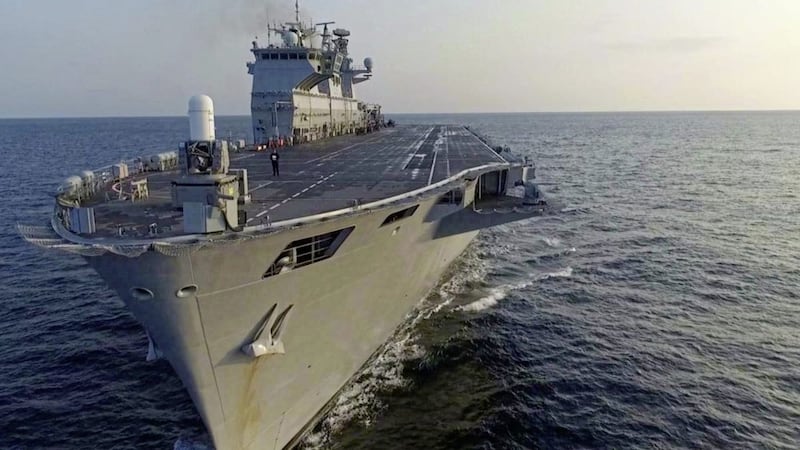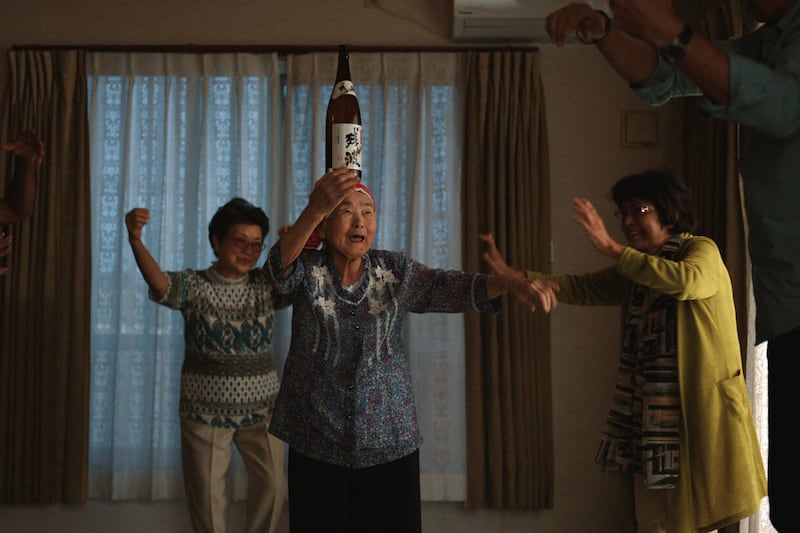Warship, Channel 4, Monday at 8pm
THE British military's PR department is pretty good at this type of stuff.
And no doubt TV production companies like it as well, because it's easy television.
Put a film crew among the 1,000 strong crew of the Royal Navy's largest ship and simmer. Result - a television series called Warship.
HMS Ocean is "a floating village" we were told more than once as it sailed from its home port of Plymouth on a 2,500 mile voyage through the Mediterranean (no doubt tipping its guns at the Rock of Gibraltar), on through the Suez Canal, the Red Sea and around the Arabian peninsula to the Persian Gulf.
The cameras were allowed on for the 10 weeks before operations began in the Gulf.
Episode one was about conveying the scale of the ship and introducing us to the chosen characters.
HMS Ocean is 200 metres long, with 14 decks and 189 sets of stairs.
For this trip she has 380 sailors, 350 Royal Marine Commandos and 250 support crew for the eight helicopters, including 39 pilots.
Each helicopter is worth £250 million, so I suppose you need a few people to keep them shiny.
Most of the journey from southern England through the Mediterranean is taken up with practice runs to get the helicopter pilots enough time in the sky to keep their licences active.
One pilot who had graduated from Sandhurst with Prince William said he wanted to fly since he saw the movie Top Gun as a boy.
The practice runs included night-vision flying and shooting practice.
Obviously everything on a warship is expensive but shooting practice spends money on a scale only the NHS could match.
Each Hellfire missile they fire at an enormous beach ball floating on the waves costs £89,000. Now Warship didn't set this out, but it's reasonable to assume that each of the 39 pilots must practice at least one shot - that's £3.5 million in an afternoon.
We spent much of episode one with Kiera Parry, a 17-year-old apprentice engineer who was on her first deployment.
In the manner of any teenager, Kiera was excited to be on board, keen to see the world and thrilled that she will spend her 18th birthday on the Royal Navy's flagship.
Clearly, the Royal Navy saw the docu-drama as an opportunity to promote recruitment, particularly among women.
But there was also something unusual in play.
Almost everyone in front of the camera remarked how HMS Ocean is "falling apart," "out of date," "ageing" and a place where "everything is broken".
Now I can't believe any sailor would denigrate their own ship without permission and I was even more surprised when Wikipedia told me HMS Ocean is less than 20 years old.
Is the Royal Navy negotiating with the Treasury through reality television?
****
Panorama: The Spy in the IRA, BBC 1, Tuesday at 11.15pm
There wasn't much PR for the British army in John Ware's programme about IRA informer Freddie Scappaticci.
It's a familiar story for Northern Ireland viewers but as ever Ware brought new nuggets of information and for the wider British audience it may have been the first time they heard how a British agent in the IRA was allowed to kill other agents.
Scappaticci gets to the horrible core of the Troubles, but was also a significant moment on the long road to the end of the conflict.
Just as the hunger strikes had shown the possibility of a republican political strategy, the arrests at Sandy Lynch's interrogation in 1990 demonstrated to the IRA leadership that British intelligence's infiltration was almost total.








